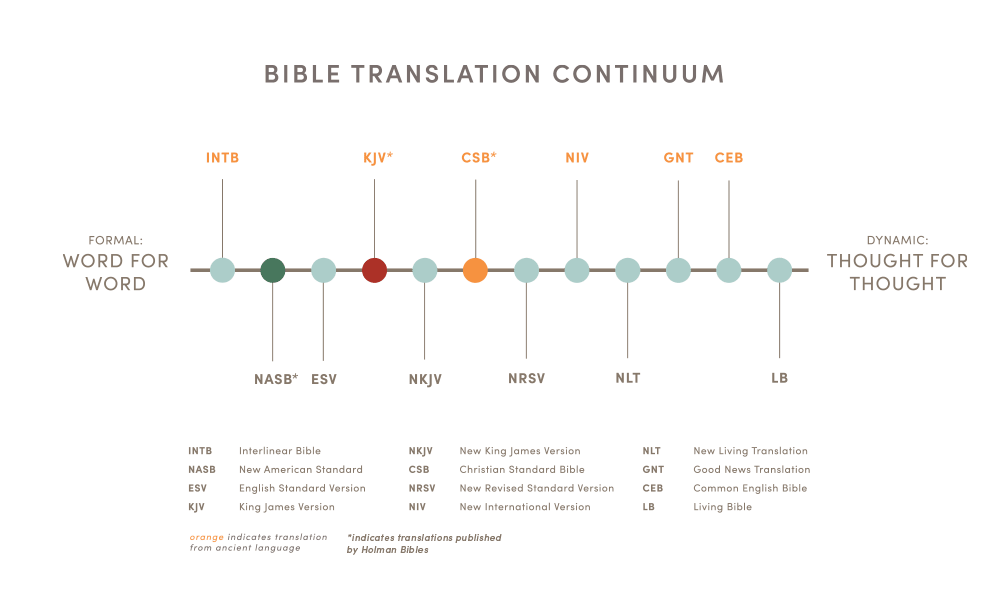Bible Translations
Holman Bibles and Lifeway proudly publish the Christian Standard Bible®.
Highly accurate for serious study and highly readable for the newest and youngest readers, the CSB was designed for lifelong discipleship. It's the fastest-growing English translation, award-winning, and endorsed by key figures such as Tony Evans, Nancy DeMoss Wolgemuth, and Daniel Akin. From the youngest in your church to the oldest, there's a CSB for everyone.
We also publish the KJV and NASB.
For over 400 years, Christians have turned to the King James Version of the Bible for a faithful and beautiful rendering of God's Word. Its rich tradition has guided generations of pastors, authors, and scholars, while its reverent language continues to shape our words today. The New American Standard Bible is one of the most literal translations of the Bible, using a formal equivalence translation philosophy. This word-for-word translation method allows you to read, study, and teach with confidence.
We are happy to help you find the Bible translation that is right for you. If you have questions, please contact us.

King James Version (KJV)
For over 400 years, the King James Version has been the trusted translation for millions of believers, capturing the majesty of God’s Word and shaping the worship of generations.

New American Standard Bible (NASB)
The NASB is widely considered the most literal word-for-word translation based on the same principles of translation, and wording, as the American Standard Version.

